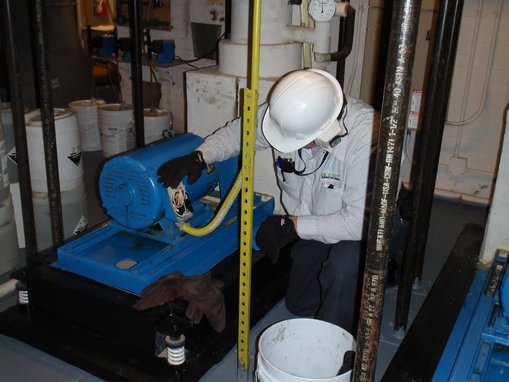
At Crockett Facilities Services, Inc. (CFSI), our goal is to constantly identify and implement measures that reduce energy loss.
As you may recall from Part 1 of our two-part series on Sources of Energy Loss in Commercial Buildings, your facility is losing energy constantly. From the moment your building was built, it started to deteriorate, losing more and more energy as the years go by. And some of the primary culprits are complicated Building Automation Systems (BAS) that your employees may not have learned how to use, outdated or poorly maintained HVAC equipment, a lack of actionable data regarding energy usage, and an overwhelmed in-house maintenance staff. That’s the bad news. The good news: there is something you can do to correct these issues.
Pretty Simple Solutions to Minimize Energy loss in Your Commercial Building
Establish an HVAC Preventive Maintenance Program
According to Consortium of Energy Efficiency, a Preventive Maintenance program can cut that energy use by as much as 20%. Deferred maintenance, meanwhile, can be cost you greatly, and not just in terms of energy efficiency. Postponing maintenance activities, such as HVAC equipment repairs, to save money or meet budget goals, can not only lead to higher costs, but also asset failures, equipment breakdown, and potential health and safety issues.
So do the right thing and stay on top of HVAC maintenance and implement Spring and Fall HVAC Preventive Maintenance Check Lists at a minimum. Simple maintenance tasks all help, from making sure your filters and coils are clean to proper tension and alignment of belts. It is well worth it to pay for proper cleaning of cooling coils, as this task is hard to do correctly.
Your building can lose anywhere from 10 to 15 percent of your fan energy because belts are not properly maintained. Also check that thermostats are properly calibrated and check temperature setpoints so the building doesn’t get too cool, which could drive occupant complaints.
Perform Energy Audits and Walk-Throughs
- Energy Audit: Perform an energy audit to see where your commercial building is losing energy. Click Here to determine which level audit makes sense for your facility needs.
- Walkthroughs: Perform a simple walkthrough during the day when your facility is at full capacity and at night when your building is vacant. Every once in a while walk the building on weekends too, especially when seasons change. These efforts will help give you a better understanding of the temperature needs of your occupants and enable you to better adjust temperature settings to conserve energy.
Compare energy usage and numbers to keep tabs on energy costs.
The Energy Star Portfolio Manager
The Energy Star Portfolio Manager enables you to compare your building’s energy usage with similar buildings in similar climates. Based on your results, you will know how your facility stacks up. With this information you can take action and better control energy usage.
Teamwork (with the Utility) Makes the Dream Work
Team up with your energy provider so you can compare your rates and search for incentives to help conserve energy and reduce your costs. That’s what we like to call a win-win.
Crockett Facilities Services: Your Trusted Partner in the Fight against Energy Loss
At Crockett Facilities Services, Inc. (CFSI), our goal is to constantly identify and implement measures that reduce energy loss and improve the operating efficiency of mechanical and HVAC equipment in our customers’ commercial and government facilities. We can conduct energy audits for our customers, analyze utility bills and data related to energy usage, and summarize our findings with recommendations for energy conservation measures and estimated cost savings.
Click Here to Request a Quote
As a MSCA GreenSTAR certified contractor and a part of the ENERGY STAR Small Business Network, we are a leader providing energy-efficient heating and air conditioning services and environmentally-responsible solutions.
To learn more about minimizing Energy Loss in Commercial Facilities, please contact us at 202.600.2787 or sales@crockett-facilities.com.
Like us on Facebook; follow us on LinkedIn, Twitter, and Google+.
Sources:
8 Drains of Building Efficiency and 5 Ways to Fix Them, Facilitiesnet.com
